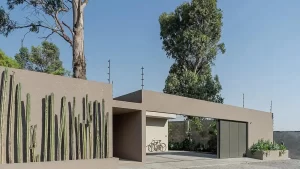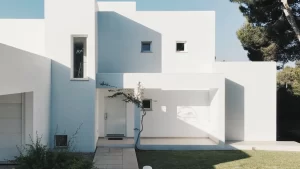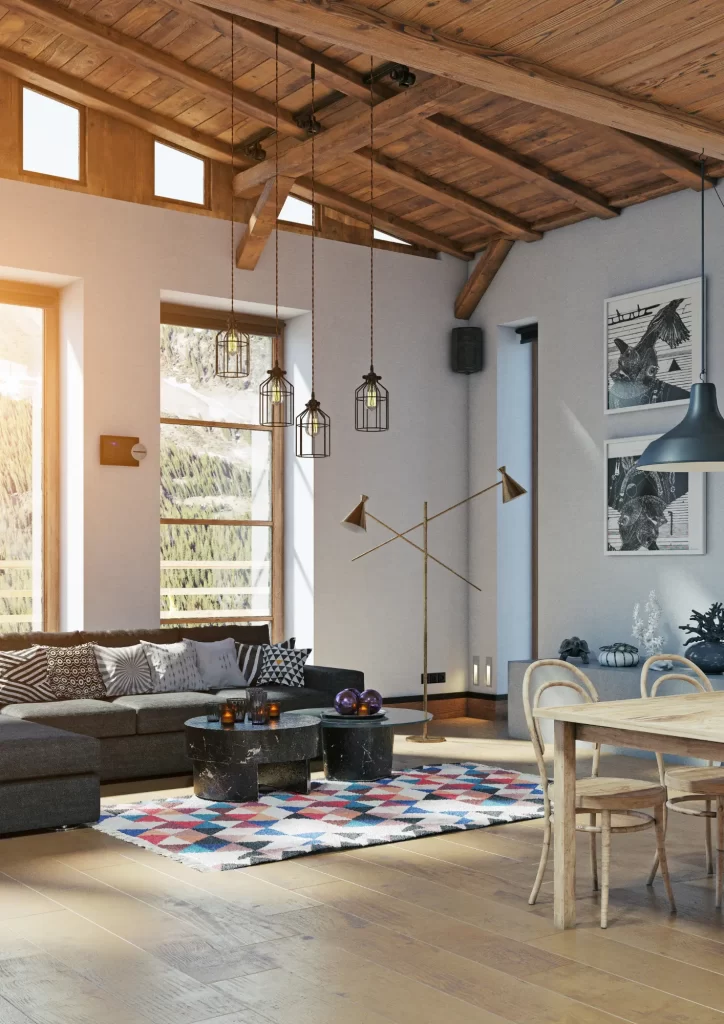Welcome to the 7th installment of Playa Builder’s “Design Guide”! As we delve into the realm of interior design, we often encounter spaces that are cozy, charming, and yes, compact. Small homes come with their own set of challenges and opportunities, and in this edition, we’re all about unraveling the art of maximizing design in these intimate abodes.
From urban apartments to snug cottages, we understand the value of every square foot. Whether you’re a city dweller with limited room to spare or simply someone who appreciates the beauty of minimalistic living, this guide is here to help you transform your small space into a functional and aesthetically pleasing haven.
Join us as we explore ingenious furniture choices, clever storage hacks, and design tricks that will make your compact space feel expansive, organized, and uniquely yours. Let’s discover how to create a harmonious balance between style and efficiency, proving that size is no obstacle to exceptional design.
Functional Furniture Choices
In the realm of small space design, furniture is not just furniture; it’s an opportunity to optimize every inch of your home. Choosing pieces that serve multiple purposes is key to ensuring both functionality and style without sacrificing precious space.
Multi-purpose Furniture:
Investing in furniture that can perform double duty is a smart move. Consider a sofa that can be transformed into a guest bed, a coffee table with hidden storage, or an ottoman that opens up to reveal extra seating and storage. These versatile pieces seamlessly adapt to different needs, making your compact space a dynamic and adaptable environment.
Wall-mounted Desks and Tables:
When floor space is limited, it’s time to think vertically. Wall-mounted desks and tables can be folded down when needed and tucked away when not in use, instantly freeing up valuable room. This approach is particularly useful for creating home offices or dining areas in small living spaces.
Foldable and Stackable Seating:
Entertaining guests in a small living room? Opt for foldable chairs that can be easily stored when not in use. Stackable stools and chairs are another excellent choice; they can be neatly piled up in a corner or a closet, leaving you with more open space for day-to-day activities.
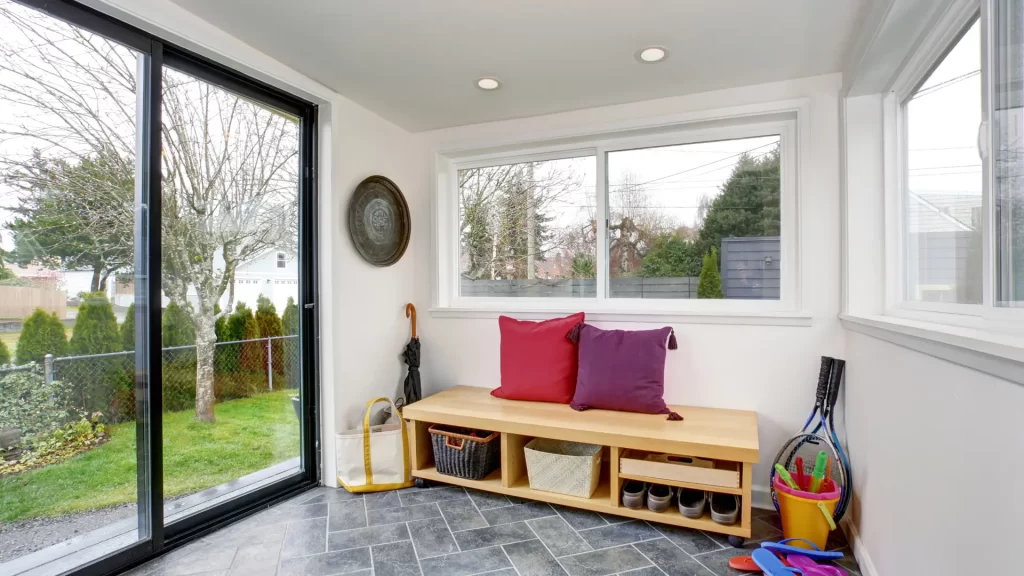
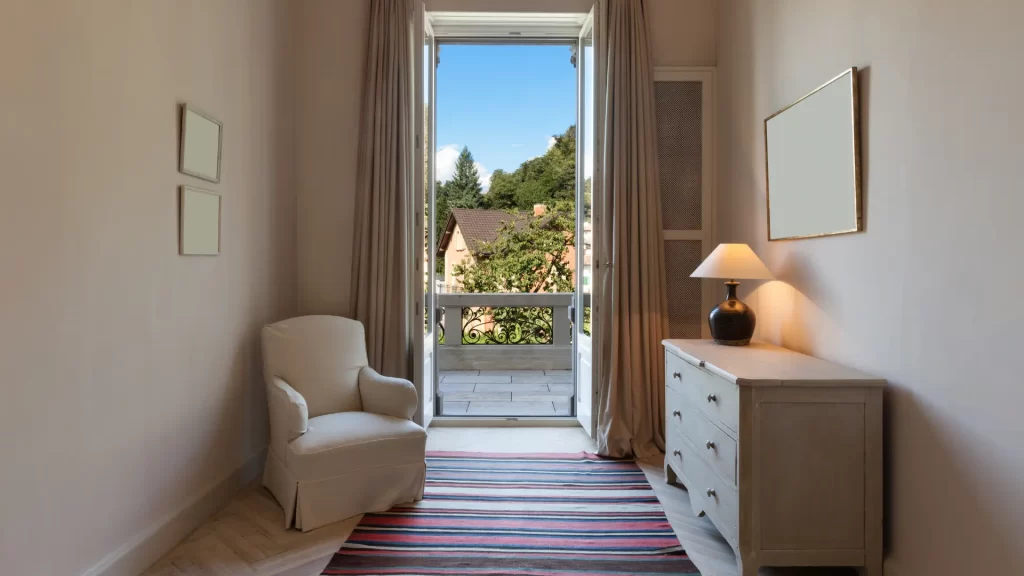
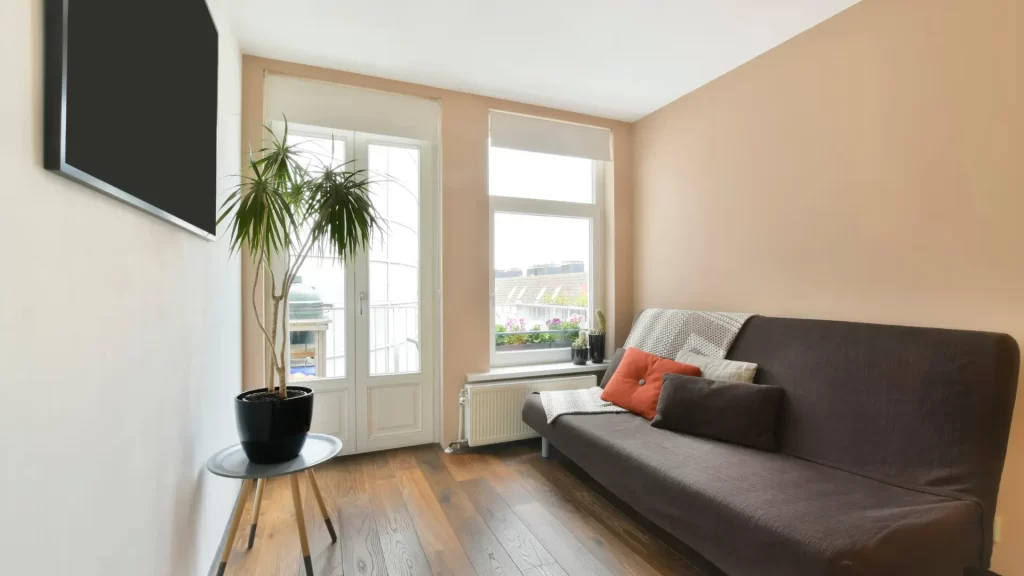
Color and Lighting
In the realm of small space design, color and lighting wield immense power. They can significantly influence the perceived size and atmosphere of a room, allowing you to create the illusion of more space and enhancing the overall ambiance.
Light and Bright Color Schemes:
Choosing the right color palette can work wonders in visually expanding a compact space. Light and neutral tones like whites, creams, soft grays, and pastels reflect more light, making rooms feel airier and more open. When walls, ceilings, and even larger furniture pieces are dressed in these hues, they create an uninterrupted visual flow that tricks the eye into perceiving a larger area.
Strategic Lighting Placement for Ambiance:
Lighting is both functional and decorative, and in small spaces, its strategic placement can make a remarkable difference. Incorporate a mix of ambient, task, and accent lighting to create layers that add depth to the room. Pendant lights and sconces that hang from the ceiling or walls not only save floor space but also draw the eyes upward, accentuating the verticality of the space. Use soft, diffused lighting to minimize harsh shadows, contributing to a cozy and inviting atmosphere.
Mirrors to Enhance Space:
Mirrors are design’s ultimate optical illusion tool. Placing mirrors strategically across from windows or in areas that lack natural light can amplify the feeling of space by reflecting light and views. A large mirror positioned on one wall can make the room feel as if it extends further, providing a sense of depth.
Glass and Lucite Furniture:
Transparent furniture materials like glass and lucite have a magical quality of seeming to take up no space at all. They visually disappear, allowing the eye to travel through them and perceive the area as less cluttered. Incorporating glass coffee tables or lucite chairs can maintain an open and unobstructed look, enhancing the overall sense of spaciousness.
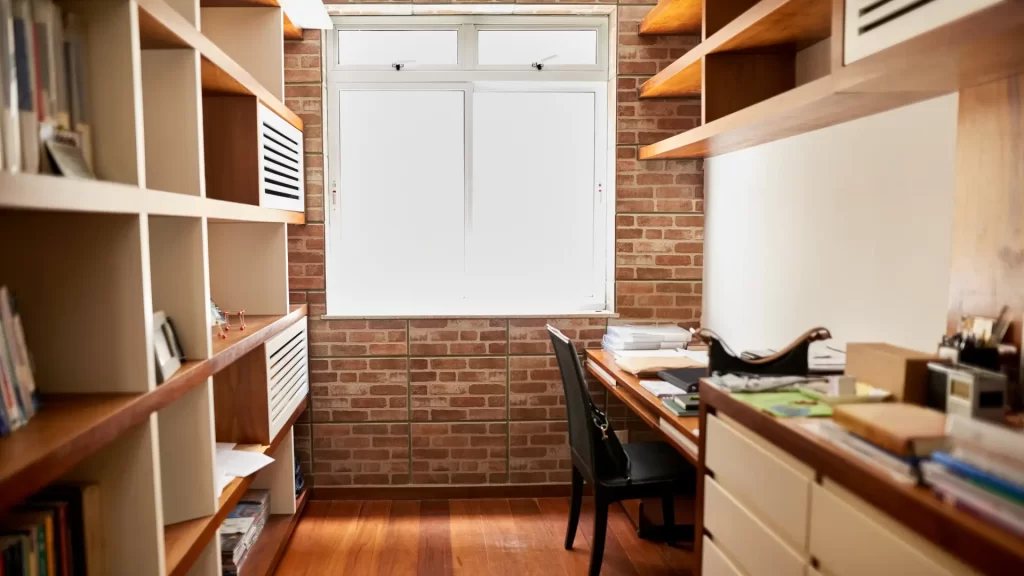
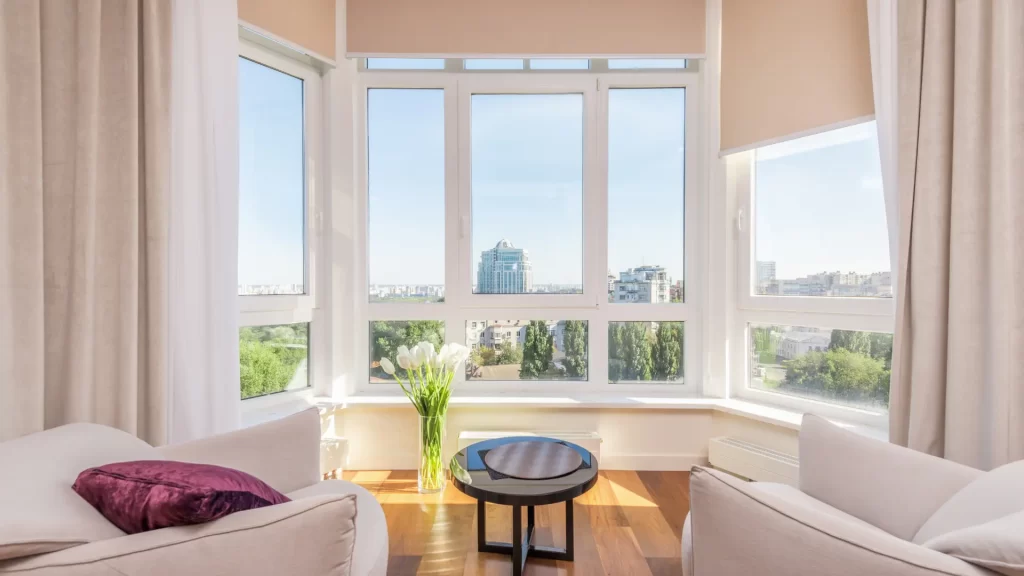
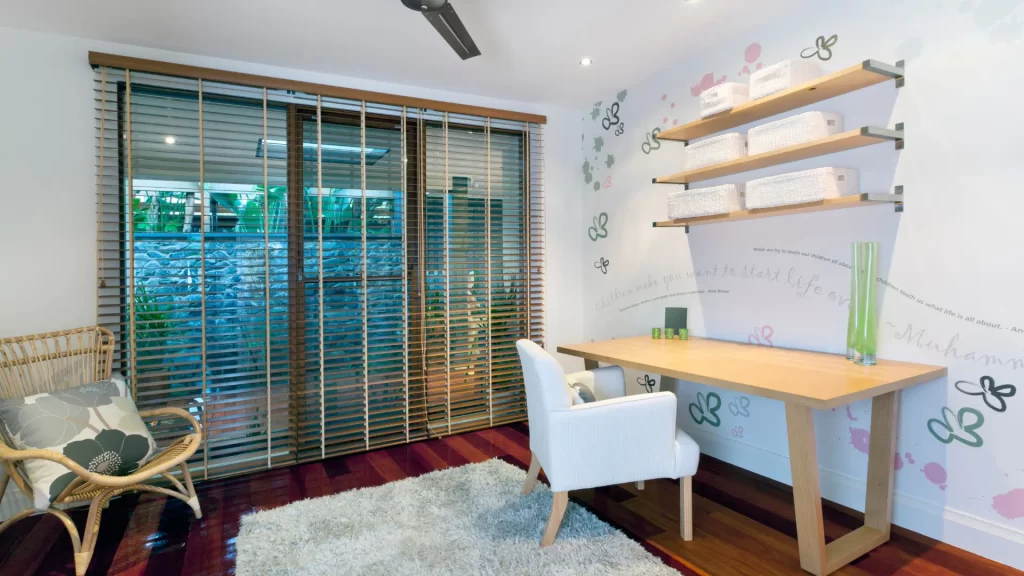
Smart Room Dividers
Small spaces often require thoughtful division to maintain functionality while avoiding a cramped feel. Smart room dividers are your solution to creating distinct zones within a limited area without sacrificing the open and airy vibe.
Sliding Doors and Curtains:
Sliding doors and curtains are versatile dividers that offer privacy when needed and recede seamlessly when not in use. Sliding doors with frosted glass or translucent panels maintain an open feel while providing a degree of separation. Curtains, on the other hand, can be drawn to delineate spaces and then pulled back to allow unobstructed movement.
Open Shelving as Dividers:
Open shelving units can act as visual dividers, offering storage and display surfaces while gently demarcating different areas. For example, a tall bookshelf placed strategically between the living and dining areas creates a sense of separation while allowing light and sightlines to flow through.
Furniture Arrangement:
Strategic furniture placement can also serve as subtle room dividers. Consider using the back of a sofa or a low console table to create a barrier between the living and dining zones. This method maintains an open sightline while suggesting distinct spaces.
Plants and Screens:
Incorporating plants or decorative screens as room dividers adds a touch of natural beauty and artistic flair. Tall potted plants or trellis-style screens can create a sense of separation without blocking light or air circulation.
Visual Continuity:
When selecting room dividers for small spaces, aim for designs that maintain visual continuity. Choose dividers with open patterns or materials that allow light to pass through. This ensures that while the space is divided, it still feels cohesive and spacious.
Minimalism and Decluttering
In the pursuit of effective small space design, the philosophy of minimalism takes center stage. Embracing a minimalist approach means focusing on what truly matters and letting go of excess, resulting in a more serene and spacious environment.
Embracing Minimalist Design Principles:
Minimalism revolves around simplicity, functionality, and intentional design. In small spaces, this translates to carefully curating your belongings and opting for clean lines and uncluttered surfaces. Choose furniture and decor with a purpose, avoiding items that serve no functional or aesthetic value.
The Impact of Decluttering on Perceived Space:
Decluttering is a fundamental aspect of maximizing design in compact homes. A clutter-free environment allows the eye to move freely and the mind to feel unburdened. By minimizing visual noise, your space automatically appears larger and more inviting. Make use of hidden storage solutions and regularly assess your possessions to ensure they align with your design goals.
Creating Breathing Room:
Minimalism isn’t just about the physical aspect; it also extends to the mental and emotional space you cultivate. By removing unnecessary items and embracing a “less is more” mindset, you create room to breathe and think. This approach to design fosters a sense of tranquility and makes your small space feel more open and serene.
Balancing Simplicity and Personalization:
While minimalism encourages simplicity, it doesn’t mean sacrificing personal touches that make a space uniquely yours. Focus on a few well-chosen decor items or art pieces that truly resonate with you. These carefully selected elements will stand out more in a clutter-free environment and add character without overwhelming the space.
Mindful Maintenance:
Embracing minimalism is an ongoing process. Regularly evaluate your space to ensure it remains clutter-free and aligned with your design vision. Remember, it’s not just about how a space looks, but how it makes you feel.
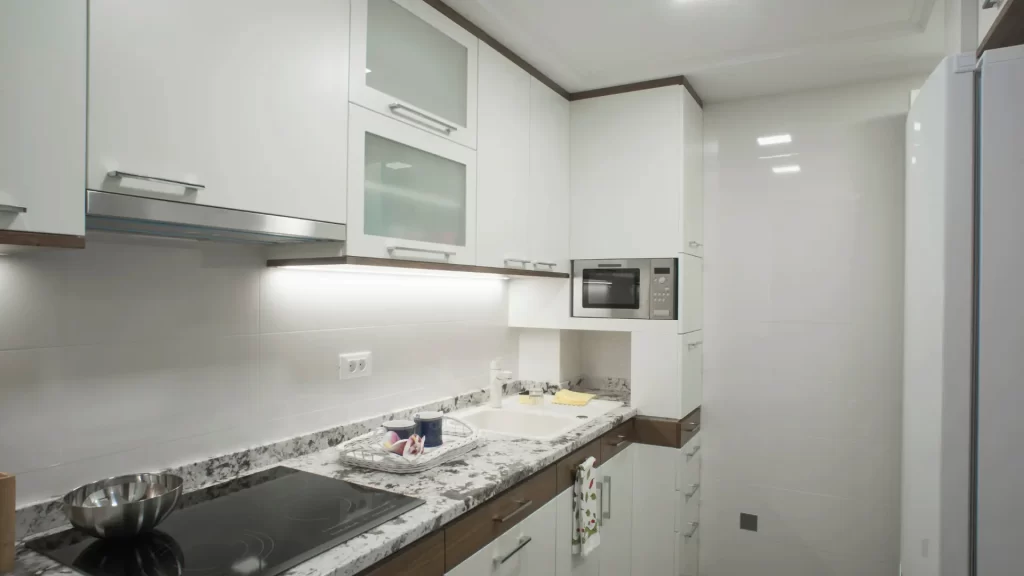
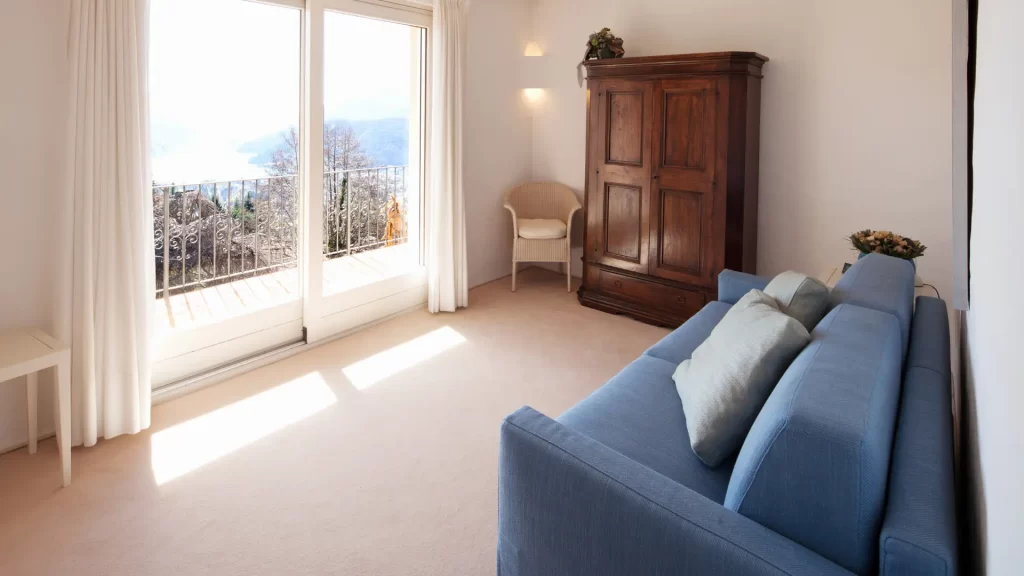
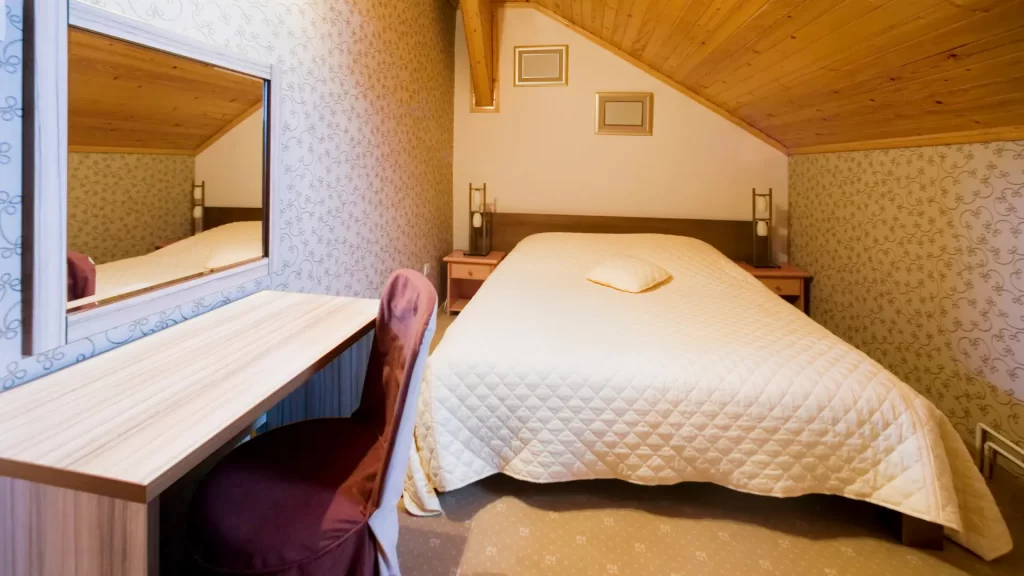
Remember, small spaces have an incredible potential for warmth, style, and functionality. By thoughtfully implementing the strategies discussed here, you can turn even the coziest corners into captivating havens that reflect your personality and lifestyle.
With only one more exciting “Design Guide” post remaining, we invite you to stay tuned for our final installment, where we’ll tie together all the insights shared throughout this series. Whether you’re a small space enthusiast, an aspiring interior designer, or simply seeking inspiration to transform your home, we hope this guide has provided you with valuable ideas and perspectives to make the most of your compact living environment. Until our next exploration into the world of design, keep dreaming and crafting your ideal space.


